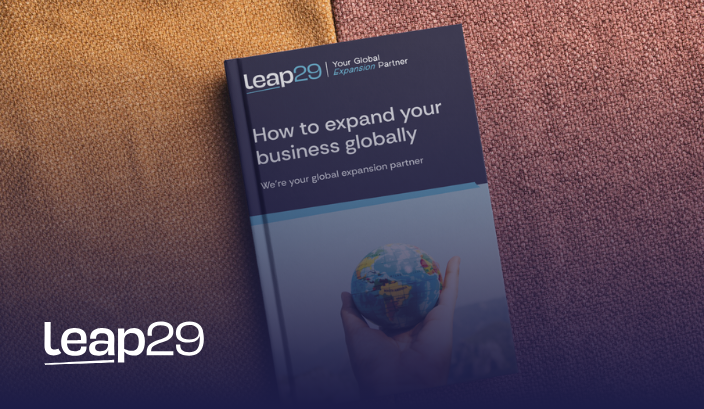Recruitment Guide
How to expand your business globally

Unlock the potential of your business with our comprehensive guide, “How to Expand Your Business Globally.”
This essential resource walks you through every step of the process, from crafting a detailed business plan and conducting thorough market research to navigating complex laws and legislation.
Learn how to set up an entity, acquire the necessary business licenses, manage payroll, and identify the right talent pool. Additionally, gain insights on approaching candidates, conducting interviews, and handling HR issues.
Ensure your global expansion is seamless and successful by filling out the form to download the guide today.
Request your free guide to global expansion
"*" indicates required fields

Civil Engineering Recruitment in Saudi Arabia

Saudi Arabia’s Stadium Construction is Reshaping the Talent Market

Leap29 Strengthens Its Presence in Saudi Arabia

دليل تأشيرة الإقامة في المملكة العربية السعودية للوافدين

Does Leap29 provide Saudi workforce management solutions that meet local labour regulations?

What does Saudi workforce management involve for companies expanding into KSA?

Tourism and Hospitality Workforce Management in Saudi Arabia

Workforce Management Services for Infrastructure & Transportation in Saudi Arabia

Saudi Arabia Iqama Updates 2025: What Employers Need to Know

How Vision 2030 is Transforming the KSA Job Market

Saudi Arabia’s Labour Law: A Guide for International Businesses

Why Saudi Arabia’s Renewable Energy Boom Should Be on Your Radar

Saudi Arabia’s Giga Projects: A Signal for Global Business Expansion

Construction Recruitment in Saudi Arabia: What Employers Need to Know

Saudi Arabia Iqama Visa Guide for Foreign Nationals
Our Recruitment Services
A global recruitment partner you can trust
We solve global recruitment challenges for businesses large and small. Whether you’re building out a new team, expanding into another country or looking for a confidential executive level hire, you can trust us to deliver.
Need 80 contractors in Brazil? Looking for just one very special permanent hire? Want us to take care of your global HR? It’s all in a day’s work at Leap29.
Whatever and wherever your mandate, we can help.
Permanent Recruitment
Connect with great permanent talent to drive your business forward. We help you find both key strategic hires to lead organisational growth and project specialists to deliver on deadlines and budgets.
Workforce Management
Reduce the complexity of managing workers in different countries and save yourself time, energy and money.











